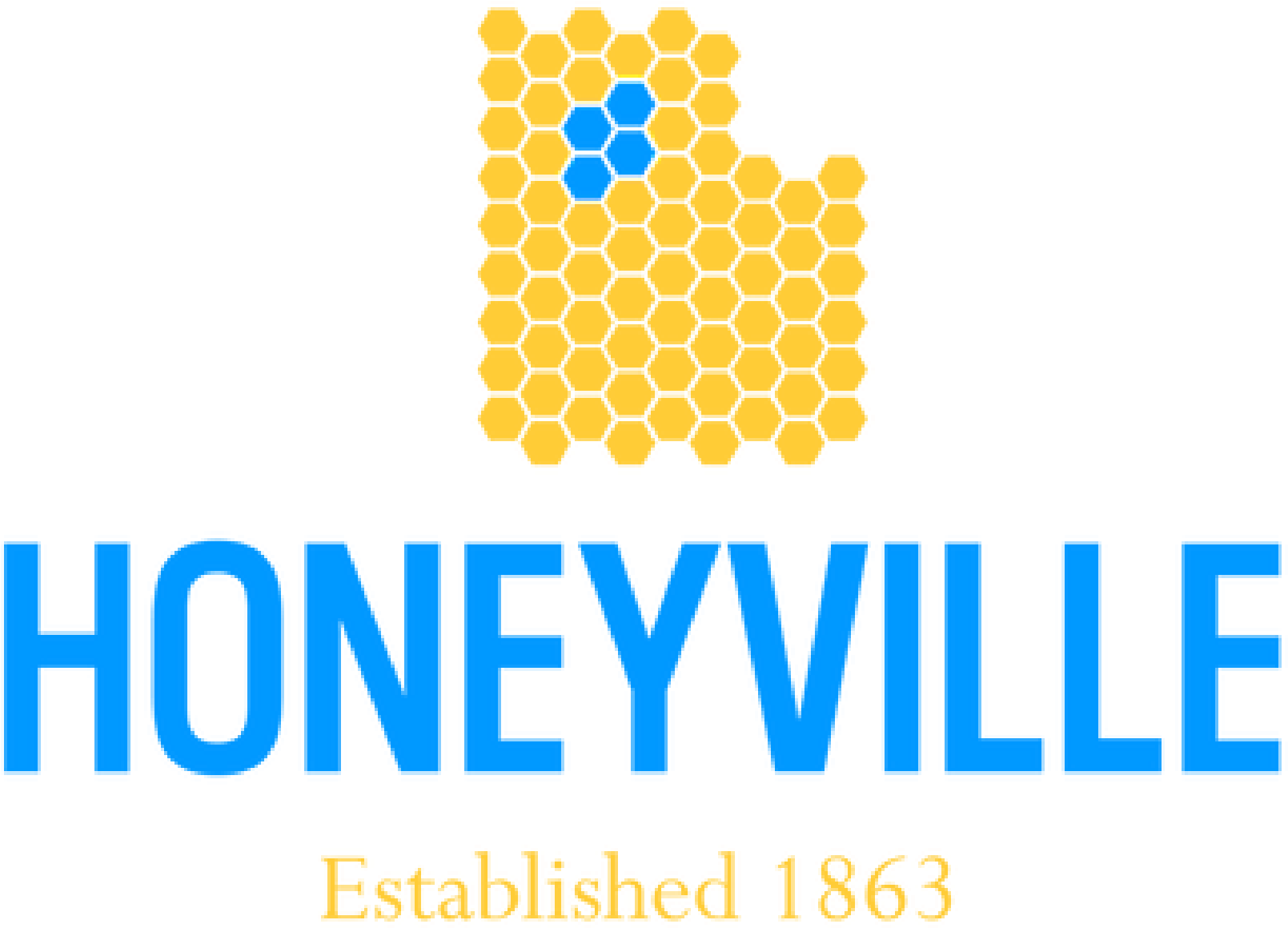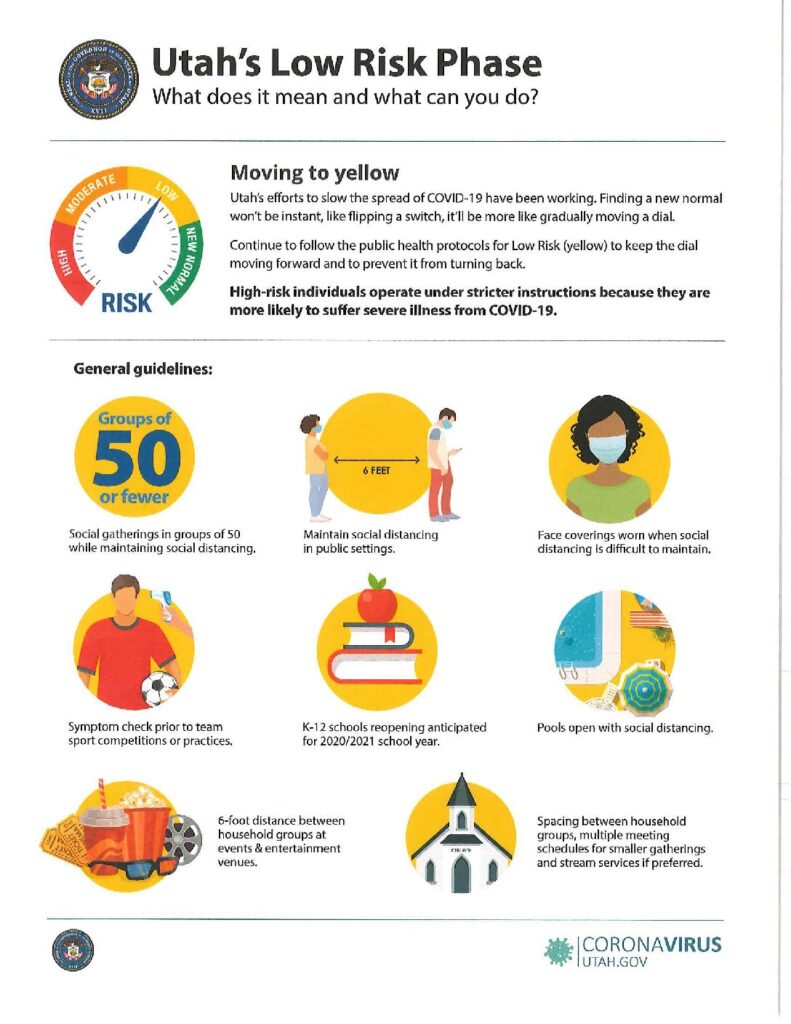Message from the Governor’s Office:
Governor Gary Herbert announced that on Saturday (05/16/20) at 12:01 am, most communities in Utah will move to the “yellow” or low risk category. The following will stay in the “orange” or moderate risk category: Grand County, Summit County, Wasatch County, Salt Lake City, and West Valley City.
The decision to move into the “yellow” or stay in the “orange” phase is based on data from our communities, including the transmission rate, hospital capacity, tracing and testing, and exposure sources.
Some municipalities have asked to stay in the orange category, and those requests are being evaluated according to this data. While the risk lessens, we must all be very aware of the vulnerability of our high-risk populations. According to Dr. Michael Good, CEO of U of U Health and Task Force member, coronavirus is a “bully.” It finds and attacks at-risk individuals.”
As the data determines the Governor and health officials may relax restrictions into orange and yellow this Saturday, it is imperative individuals in high-risk of severe illness continue to follow stricter guidelines than the general population.
Who are High-Risk Individuals?
· People aged 65 years and older.
· People who live in a nursing home or long-term care facility.
· People with chronic lung disease or moderate to severe asthma.
· People who have serious heart conditions.
· People who are immunocompromised including cancer treatment, smoking, bone marrow or organ transplantation, immune deficiencies, people living with HIV or AIDS, and prolonged use of corticosteroids and other immune weakening medications.
· People of any age with severe obesity (body mass index [BMI] >40) or certain underlying medical conditions, particularly if not well controlled, such as those with diabetes, renal failure, or liver disease.
· People who are pregnant should be monitored since they are known to be at risk with severe viral illness, however, to date data on COVID-19 has not shown increased risk.
Guidance for High-Risk Individuals:
- Face coverings worn at all times in public setting
- Limit travel to only essential travel; if telework is not possible, limit travel to work-related travel only
- Limit visiting friends or family without urgent need
- Limit physical interactions with other high-risk individuals, except for members of your household or residence
- Limit attending gatherings of any number of people outside your household or residence
- Do not visit hospitals, nursing homes, or other residential care facilities

